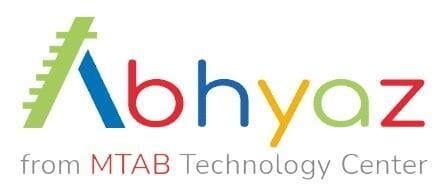Introduction
Enterprise transformation involves strategic restructuring to achieve long-term goals. It entails comprehensive reworking of a company's operations that goes beyond minor tweaks. While sales focus on lead conversions, marketing is crucial for brand recognition, customer engagement, and nurturing throughout the purchase cycle.
With primary emphasis on sales and marketing, this article explores how organizations can implement enterprise transformation to alter sales and marketing strategy.Vision for enterprise transformation
We envision a seamless future for sales and marketing through a single front that enhances client interactions, boosts lead conversion rates and enables skilled workforce. Also, we offer tools and infrastructure for business needs, implementing and handling customer-specific cases. Tracking the progress of this transformation requires key performance indicators (KPIs) and routinely assessing outcomes.
Use Cases that propel enterprise transformation
Lead generation workflow:
Marketing initiatives establish leads via different avenues, enhancing prospect quality and simplifying the sales cycle.
Cross-selling and up-selling:
Sales and marketing collaborate to find chances for cross-selling complementary goods or upselling higher-tier solutions inside current client accounts, resulting in increased income.
E-commerce optimization:
Optimizing e-commerce experiences, user interfaces, and digital storefronts for firms with online sales platforms improves customer retention and encourages repeat purchases.
Customized chatbots:
Customized chatbots provide personalized responses, specialized product suggestions, and 24/7 support for virtual sales repetitions.
Embracing technological advancements
We primarily focus on digital technology integration in sales and marketing activities, utilizing CRM systems, data analytics tools,marketing attribution modelling and allow data-driven content making.Also, integrating AI and automation tools enhances productivity in lead scoring, customer segmentation, targeted marketing, and sales forecasting.
A well-optimized sales funnel improves marketing, operations coordination, resource management, and client data. Improved AI-powered personalization, sales performance analytics, and the seamless hybrid experiences constitute the future of sales funnel optimization.How does Marketing Automation fosters customer engagement?
It solely emphasizes on shifting from product-centric to customer-centric approach, understanding consumer wants, preferences, and domains for tailored marketing activities, leading in customer engagement. Potential customers are enticed intuitively by inbound marketing strategies including content marketing, social media interaction, and search engine optimization (SEO). Added to that, the creation of a unified omni-channel strategy guarantees an optimal customer experience across all interfaces.
Personalized approach for B2B growth with Account-based Marketing
To implement ABM for business-to-business growth in an organization, we need to analyze revenue potential, industry influence and craft personalized marketing strategies to align sales and marketing activities.
Ensuring pertinence and preciseness of account data, scaling individual efforts across several accounts and fulfilling significant resources might be challenging. Hence, automation enables efficient resource allocation through data cleansing and validation. This individual approach is preserved while serving a wider demographic and maintaining the integrity of ABM initiatives by utilizing AI chatbots and virtual assistance.Significance of Integrated Campaigns in Transformation
Integrated campaigns combine sales and marketing initiatives, coordinating message, content, and engagement across various interfaces for a seamless customer journey. It shares a common goal of revenue generation. We ensure that the information transmitted is stable strengthening the organization's value. These objectives guide campaign path, aiming for sales, market expansion, and product introduction. From awareness to transformation, distinct content guides consumers for interaction and purchases.
Conclusion
To summarize, sales and marketing are steadfast collaborators in corporate change. In the arena of enterprise transformation, sales and marketing interaction emerges as a critical force influencing change trajectory and driving enterprises toward development and flexibility. Organizations use data-driven insights for informed decision-making, managing business landscape with agility and accuracy. Enterprises can walk the route of growth and profitability by integrating marketing, sales, client relationships, and data insights.
FAQs:
1. How does enterprise transformation differ from traditional business strategies?
Enterprise transformation extends beyond modest expansion. It entails an in-depth reassessment of operations, strategies, and technology in order to achieve holistic and sustainable evolution.
2. What are the common challenges in enterprise transformation?
Some frequent challenges includes unclear strategy, inadequate technology adoption, change management and resource constraints. Navigating these obstacles by implying strategic planning, thorough analysis and customer engagement can resolve them.
3. How does ABM impact ROI?
ABM can be customized for small firms, generating higher return on investment and fostering more significant engagements and conversions due to its focused approach.
4. Can sales funnel optimization work for both B2B and B2C enterprises?
Yes, the optimization works for both B2B and B2C enterprises since it understands customer preferences and focuses on target audience alongside focusing on alignment with evolving market trends.
5. How can organizations get through internal opposition to integrated campaigns?
Effective communication, benefits demonstration, and training overcome internal resistance to integrated campaigns.

